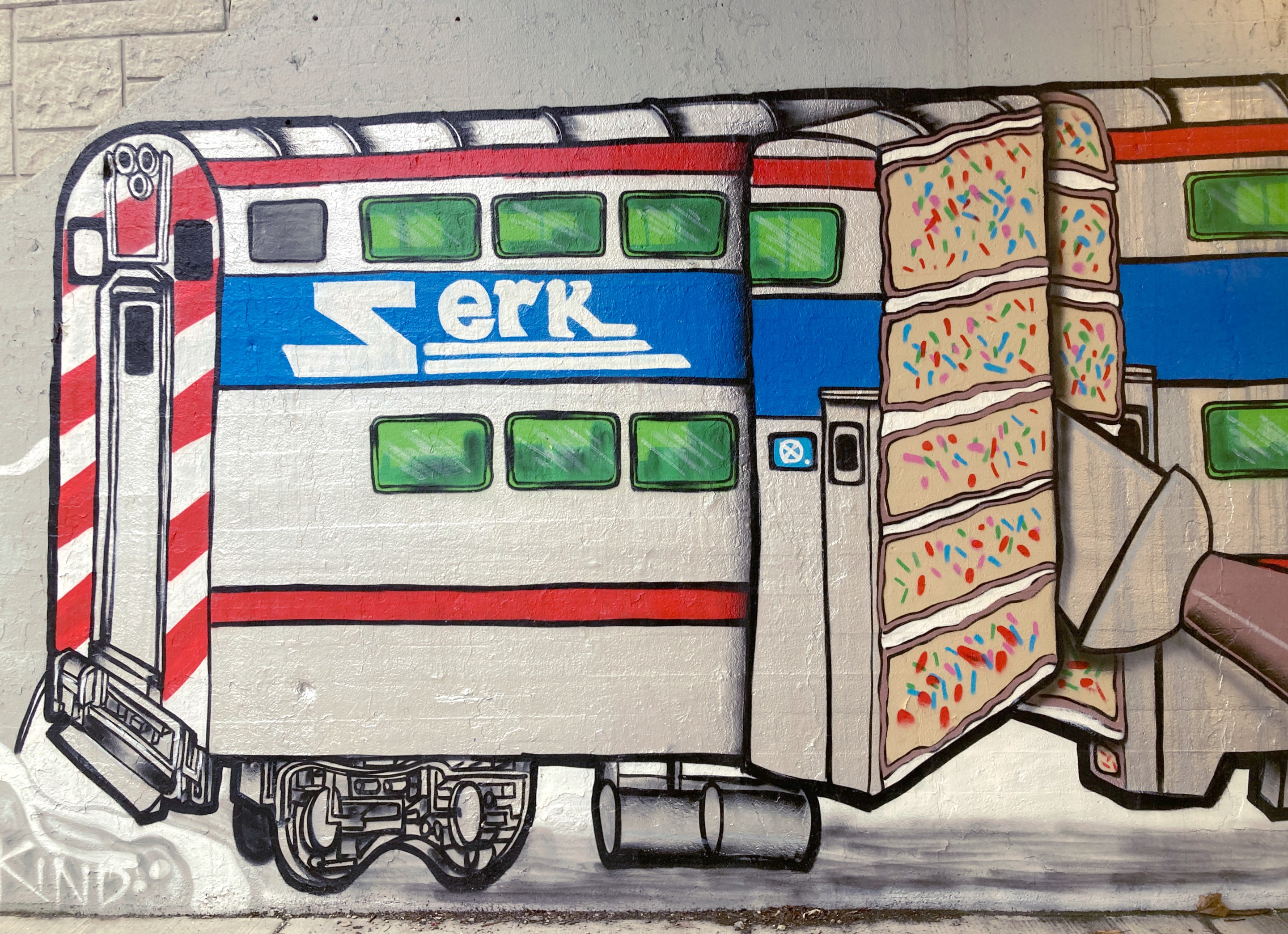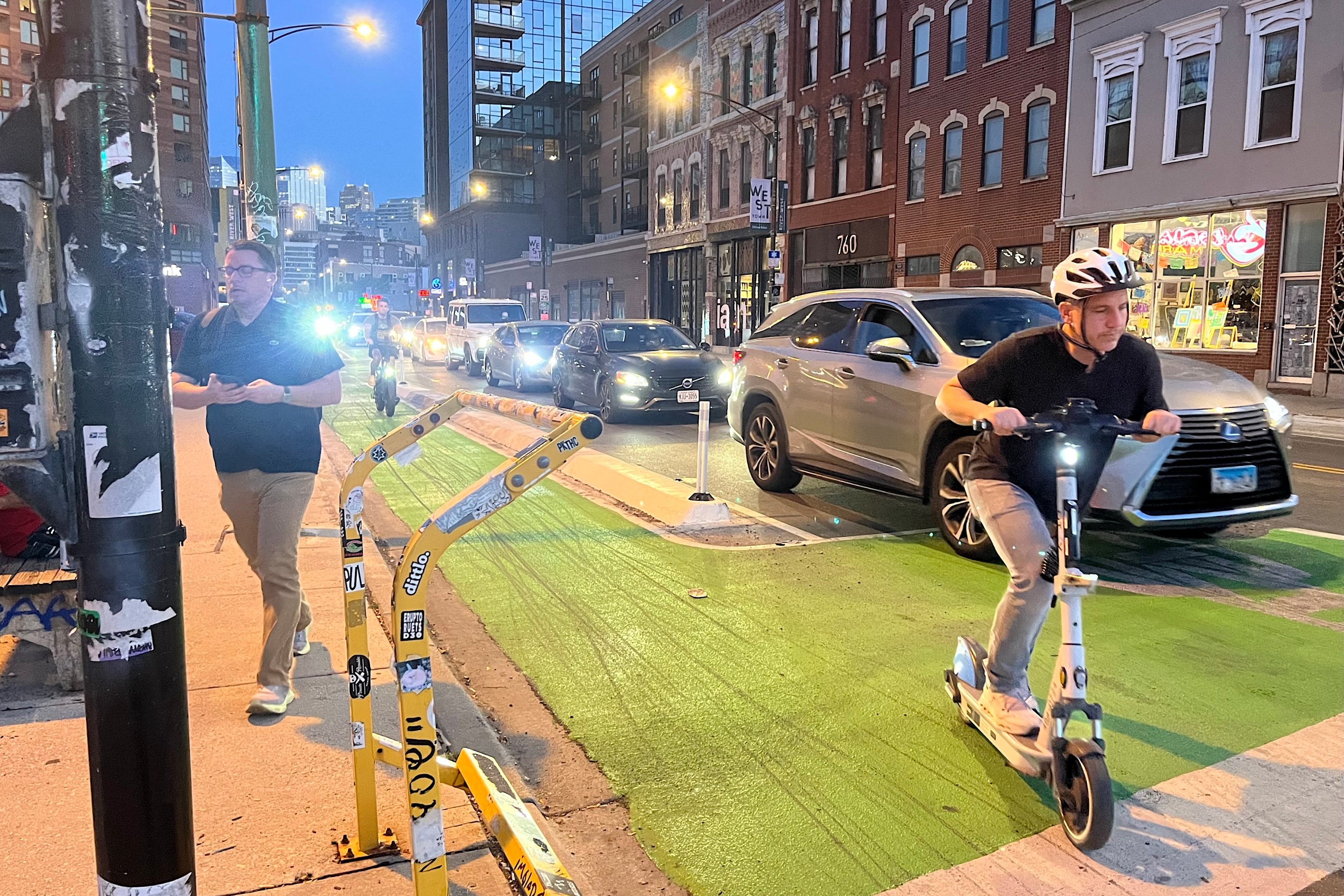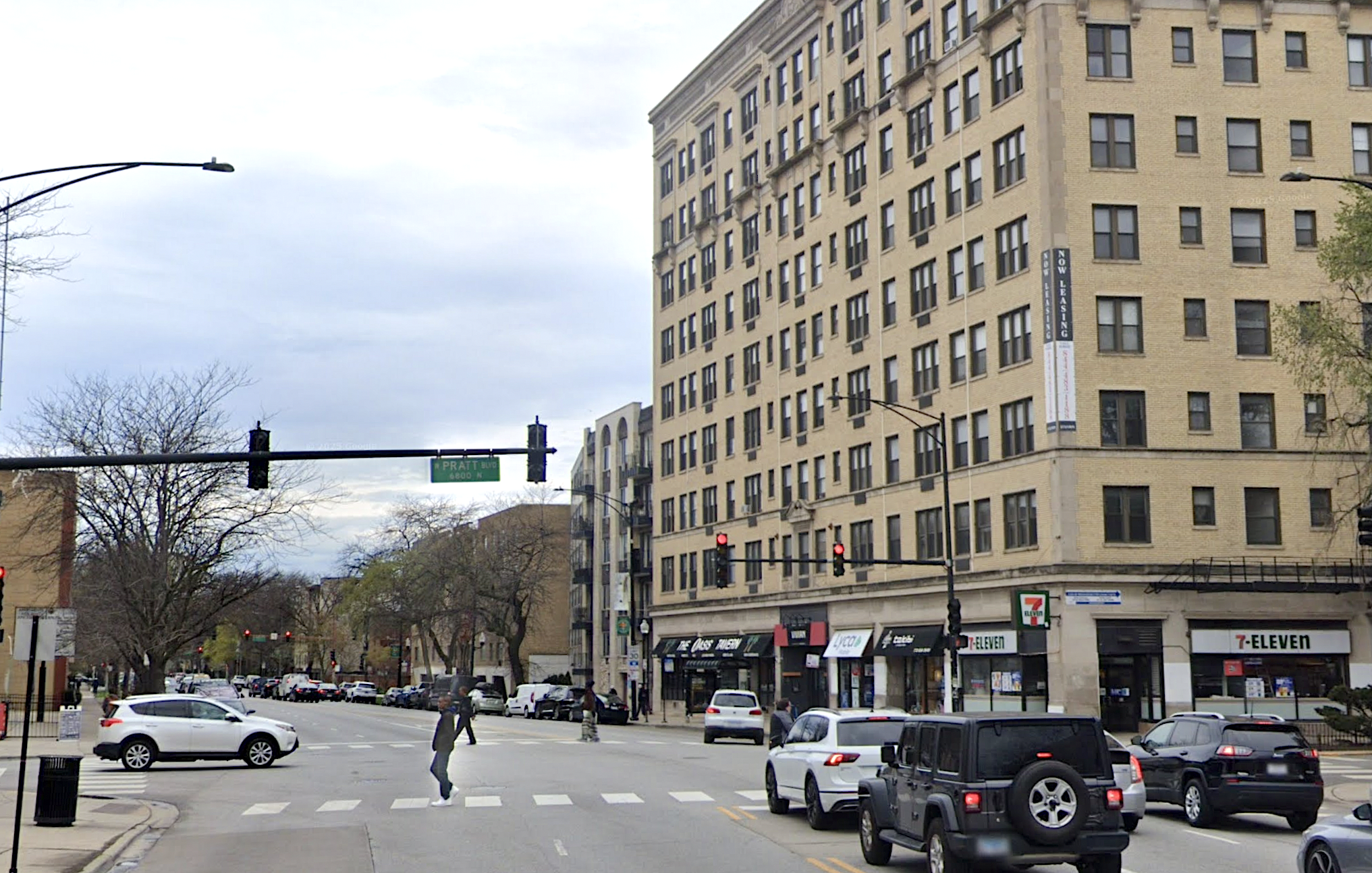
By Austin Busch
Last Friday, the Illinois General Assembly passed a transformative piece of legislation for transit reform and funding with veto-proof majorities, and Gov. JB Pritzker is widely expected to sign it into law soon. Some parts of the bill have been relatively unchanged for months now, such as the creation of the Northern Illinois Transit Authority and statewide parking reform. Revenue sources, however, were turbulent until the last few hours.
The bill was largely hammered out by Democrats in the legislative caucuses, ultimately with the Pritzker, House Speaker Emanuel "Chris" Welch, and Senate President Don Harmon meeting directly.
It did garner a nod of bipartisan support, however. Republican representative (and Rosemont mayor) Brad Stephens co-sponsored the bill, but was given an excused absence during the official vote.
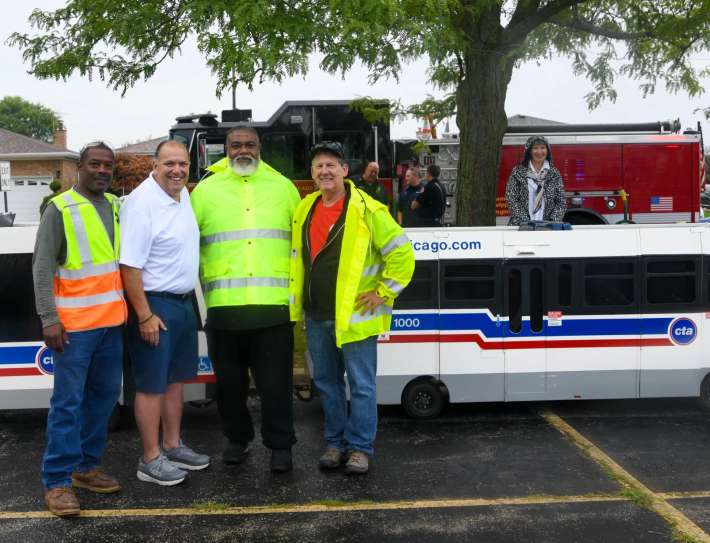
In the other chamber, Republican Sen. Seth Lewis joined Democrats in voting to pass the bill. Senate Republicans have also been credited with the suggestion of using the road fund interest as a revenue source, which was eventually included.
The bill includes a hefty revenue package to support operations and capital projects. It has a reformed board structure tasked with implementing a "one-network, one-timetable, one-ticket" model. There's a suite of land use reforms to redevelop transit-served areas. And it includes a laundry list of implementation steps. So this bill has something for everyone.
What follows is a detailed discussion of the different sections of the [checks notes] 1,044-page document, which you can peruse yourself here.
Rev(enue) your engines
The Illinois sales tax on motor fuel purchases will be directed to transit operations. This section is a bit complex, so please pay attention!
The sales tax on purchasing fuel is a percentage tax, set at 6.25 percent for the state level, with the result that changes in fuel prices change the total incoming revenue. This revenue is expected to total $860 million annually, with 15 percent going to downstate operations and 85 percent going to NITA.
The Motor Fuel Tax is a separate, per-gallon motor fuel tax of $0.483 per gallon. Unlike the sales tax on motor fuel purchases, it doesn't fluctuate with the price of gas, and it will be unaffected by the transit bill. Instead, it will continue to fund road construction and maintenance.
Motor fuel purchased in the NITA area will also be subject to the sales tax for the Regional Transportation Authority (the current, less powerful umbrella agency NITA will replace).
The RTA will be allowed to vote on an increase to the RTA sales tax by 0.25 percent. This is expected to raise $478 million, which will go towards NITA operations. Unlike the existing RTA sales tax, this increase will not be allowed to be diverted from NITA to fund law enforcement and other transportation uses like roads and local dial-a-ride services.
Interest from the road fund will be used on transit capital spending. This is estimated at around $200 million, with 10 percent going to downstate agencies and 90 percent going to the CTA, Metra, and Pace. The Illinois Road Fund is limited to certain uses, though one such use is "relating to the administration of public transportation programs," enabling this expenditure.
The Illinois Tollway will see the toll rate increases starting January 1, 2027. Passenger tolls will rise by 45 cents. Commercial tolls will increase by 30 percent, and biennially increased with the CPI Inflation rate up to 4 percent. This is expected to raise up to $1 billion, allowing a $10 billion bonding plan for tollway upgrades.
The tollway increase can only be used for tollway-related projects such as road expansion or widening, though the tollway does have the power to construct railroad tracks for passenger or freight operations. The increase in tollway expenditures can also be used as toll credits, a dollar-for-dollar “soft match” in future federal transportation grants that can increase the federal share in grant funding for significant transit and non-tollway road projects. This provision was included to win the support of IUOE Local 150, a road construction union who had previously lobbied against moving revenue away from road-building projects.
Service efficiencies in the first full year of the NITA board have been enumerated in the legislation, with $10 million in service-delivery savings, $20.1 million from labor optimization, and $16.8 million in real estate and property savings.
The legislation also makes several adjustments to fare policies:
- Fare increases will be frozen for one year, allowing the new NITA board to be appointed first.
- A universal fare system would be created under NITA, for payment systems and fare policy.
- The farebox recovery ratio, the proportion of revenue that the region’s transit system must collect from passengers, will be lowered from 50 percent to 25 percent.
- ADA Paratransit service, which is federally mandated and more expensive to operate, will have a lower 5 percent farebox recovery ratio.
- Free rides will be given on fixed-route buses and trains for seniors (65+) and those with disabilities, each of whom must be below certain income thresholds. (While the RTA currently has a program for this, the legislation added new text, seemingly to codify it.)
- Reduced-fare programs will be created for survivors of domestic violence, veterans, recently incarcerated, and those experiencing homelessness.
- A fare-capping program will be instated within two years, ensuring passengers do not have to buy a day pass or multi-day pass in advance to get the financial benefit of having one.
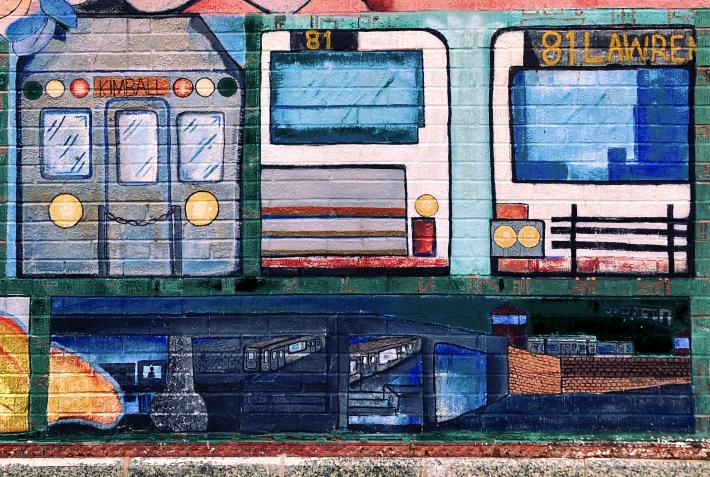
Change orders
Shifting from RTA to NITA will require a handover period, during which several new initiatives will kick in and working groups will begin making reports. The Illinois Department of Transportation will procure a transition consultant by September 1, 2026, in coordination with a Transition Working Group.
Their three enumerated transition goals include: a process for a coordinated 5-Year Capital Plan, a universal fare card, and a crime prevention task force. Myriad other changes will be made, comprehensively summarized below.
Service coordination
- Mandates that reducing greenhouse gas emissions and increasing transit ridership share must be goals included in NITA’s five-year strategic plans, influencing service plans and capital investments.
- Adopts a regionally coordinated service plan by 2029, with service boards (CTA, Metra, and Pace) making proposals to be incorporated into a final NITA plan.
- Centralizes fare policies and implementation with NITA.
- Centralizes trip planning tools and real-time arrival information with NITA.
- Creates a new Transit Integration Policy Development Committee and a Transit Coordination Oversight Officer within the Illinois Department of Transportation, to integrate transit and highway planning.
Accessibility and access
- Establishes an "Office of Disability of Policy and Planning" for ADA responsibilities, paratransit, and accessibility planning.
- Existing local dial-a-ride services will be recommended for regional coordination, and NITA will establish a fund to support these local operations under standard service criteria.
- Establishes a language access plan to support limited-English speakers.
- Creates an improved process for eligible visitors to request paratransit service in Illinois when traveling outside of their jurisdiction of residence.
Development and parking Changes
- Prohibits mandated parking for new residential and commercial (non-hotel) uses within a half-mile of a hub (rail stations and bus intersections) or an eighth-mile of a corridor (street segment with buses every 15 minutes at peak times).
- Allows Illinois transit operators to finance and construct transit-supportive developments within a half-mile of rail stations, an eighth-mile of bus stop, or a quarter mile of a trail, in compliance with local zoning and land use regulations.
Auditing powers
- Introduces 'service standards', developed by 2028 and used to distribute all funding by 2031. These include publishing monthly reporting of performance measures, including on-time performance, ridership, crowding, and customer safety and satisfaction.
- Each service board's executive director will be subject to an annual performance review, upon which the NITA board may vote to remove the director for just cause.
- Establishes a Chief Internal Auditor appointed by the NITA board with oversight of all service board operations.
- NITA will have the authority to compel information from service boards about their operations.
Enforcement, safety, and ambassadors
- Allows NITA to establish a traffic law enforcement program in jurisdictions without adequate local enforcement, enabling violations for stopping in bus lanes or at bus stops.
- Requires a real-time function to report safety concerns through a mobile app within 6 months, similar to Metra’s COPS app.
- Establishes a new cross-jurisdictional law enforcement task force, an Office for Transit Safety and Experience, and a Chief Executive Transit Safety Officer. Within one year, the new NITA board will vote on recommendations to implement sworn law enforcement on transit.
- Enables reimbursement for emergency responders called to CTA stations in Rosemont, Oak Park, Forest Park, and River Forest.
- Establishes a transit ambassador program (a strategy that has shown promise in systems like LA Metro and BART), made up of trained, unarmed personnel on buses, bus stops, trains, and stations. This will include CTA station attendants and customer-facing staff on Metra, who will be re-trained for new duties.
All boarded up
While the makeup of the NITA board is relatively intact since the Senate's bill passed in May, there are some small changes. The CTA board was restored to 7 total seats after a second appointment by the governor was added back. Cook County's appointments became more geographically specific for certain NITA directors, ensuring representation for different suburban clusters.
As part of Springfield's push for greater oversight, the board-elected chairs of the NITA board and service boards are subject to the approval of the Illinois Senate through 2030. Most votes by the NITA board will also require a supermajority, which is either 15 total votes (some collar county officials weren't happy about that option) or 12 votes with at least two from each appointing body, requiring inter-regional cooperation.

Coming soon to a transit system near you
The bill contains several new (sometimes hastily written) provisions for new service or infrastructure, widely regarded as part of the negotiating process that occurred.
Two to three new CTA stations are required to be opened by 2029, though the actual locations are complicated by some of the last minute language changes in the passed bill.
- One is along the Green Line "within the Englewood community area." This is commonly expected to be a restoration of the Racine station.
- The other is a station and/or entrance on the Blue Line "at or near the Central station and the western entrance at Leclaire Avenue location". This is commonly expected to be a restoration of the Central station on the Forest Park branch. Leclaire Avenue, located between Leamington and Lavergnne in the 'L' section of the Brennan System, is east of Central and does not reach the Blue Line, complicating the text's interpretation. There is a closed auxiliary entrance to the Cicero station at Lavergne that may be the intended entrance. The prior version of the bill stated simply that the new station should be “at or near the Cicero/Laramie location”. A Cicero station already exists on the Forest Park branch.
Metra would not see any required infrastructure changes, but several service pattern requirements and studies are required.
- A new "regional rail" schedule will be piloted on the Metra Rock Island line by 2027. The system is required to eventually implement regional rail service systemwide, moving from the rush hour-focused service to more frequent service all day.
- A study for an extension of the Metra Electric University Park branch to Kankakee will be required. Kankakee is in Kankakee County outside the NITA service area, and would likely encounter similar bureaucratic hurdles to Oswego and DeKalb.
- A study for improvements at the Joliet station for continuing services to Peoria and other destinations beyond the NITA service area will also be required. This could enable the restoration of Rock Island Line service west of Joliet, or may enable services towards St. Louis to utilize the Metra-owned Rock Island tracks.
- Metra will also be eligible for state grants to separate grade crossings.
Pace did not receive any service or infrastructure requirements, but it may benefit from two provisions with particular relevance:
- IDOT and the Tollway are required to support NITA and other transit providers in Bus Rapid Transit implementation.
- Local governments will be required to add sidewalks connecting to transit stops when reconstructing a roadway within a quarter-mile of a transit stop, which may be reimbursed by NITA.
Lastly, downstate saw a few earmarks and enabling language for grants that would benefit system expansions:
- Earmarks will require disbursement to support Champaign's airport, and offset costs for a daily Springfield-to-Chicago commercial flight. (Of course, travel between downtown Chicago and downtown Springfield via Amtrak, probably doesn't take much more time, and may actually be faster. - Ed.)
- IDOT will establish a Transit to Trails Grant Program for reaching outdoor recreational areas by transit, emphasizing access for environmental justice communities.
- The legislation enables up to $342 million from the Downstate Transit Improvement Fund and $134.7 million from the Downstate Mass Transportation Capital Improvement Fund to be used for intercity rail capital projects between Chicago and downstate destinations.
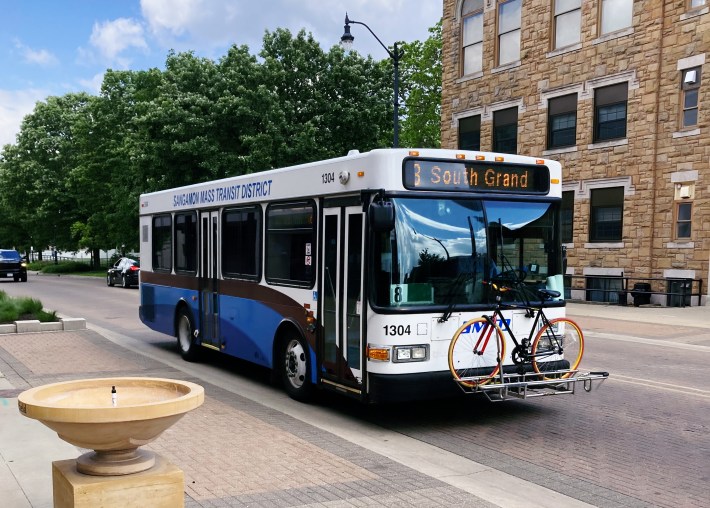
What didn't make the cut
Since debuting the first NITA legislation to supplant the earlier MMA proposals, the reforms in the package largely remained intact. Almost every funding source proposed by lawmakers or included in past iterations of the legislation were completely left out of the final agreement, however. These included:
- A ride-share tax
- An expansion of a real estate transfer tax to the suburbs
- The elimination of a sales tax discount for biodiesel
- Fees on electric vehicle charging infrastructure
- A first-in-the-nation wealth tax on unrealized gains, aka the "Billionaire Tax"
- Event ticket surcharges
- A statewide entertainment tax on live shows
- A tax on entertainment streaming services
- A program allowing municipal speed cameras.
- Congestion pricing, either variable-rate tolling such as Virginia's I-66 or cordon pricing like Lower Manhattan
- A $1.50 delivery fee on retail and restaurant items, aka the "Burrito Taxi Tax"

Artist's rendering of a type of delivery that would have been subject to a surcharge under the bill that passed the Senate last May, but was sliced from the final legislation. Illustration: Jonathan Roth
Downstate transit operations came in at $129 million, below advocates' goal of $200 million, which Rep. Maurice West of Rockford expressed disappointment over. However, this was a tradeoff for non-Chicagolanders getting a pass on some of the final revenue sources, like the sales tax increase.
Other downstate legislators were miffed at the diversion of the motor fuel sales tax, which shifted expenditures from 65 percent for downstate road construction to 15 percent for downstate transit operations. The bill is still a significant increase in downstate transit funding, and land use provision including parking reform and transit agency development powers will extend statewide.
Browse the 1,044-page bill yourself here.

Do you appreciate Streetsblog Chicago's paywall-free sustainable transportation reporting and advocacy? We officially ended our 2024-25 fund drive in July, but we still need another $42K+ to keep the (bike) lights on in 2026. We'd appreciate any leads on potential major donors or grants. And if you haven't already this year, please consider making a tax-deductible donation to help us continue publishing next year. Thank you!
